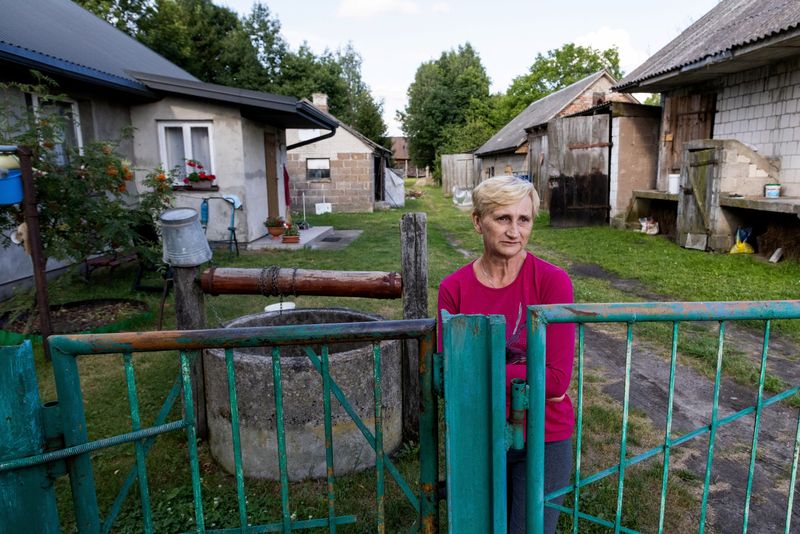Fears in Poland’s east, as Wagner Group trains across the border
2023.07.20 16:58
4/4

© Reuters. Village head Agata Moroz stands in front of her house in Kolpin-Ogrodniki, Poland July 20, 2023. REUTERS/Kuba Stezycki
2/4
By Agnieszka Pikulicka-Wilczewska
KOLPIN-OGRODNIKI, Poland (Reuters) – People living near Poland’s border with Belarus said on Thursday they could hear shooting and helicopters after Russia’s Wagner Group arrived to train Belarusian special forces just a few miles from the frontier, compounding their fears the Ukraine war would reach them.
Agata Moroz, the 56-year-old village mayor of Kolpin-Ogrodniki, could not stop her tears as she expressed her anxiety for her family.
“I’m afraid. I have a son in the army. He’s a military man. I’m worried about him, I have grandchildren. I have a disabled husband. I’m most worried about them,” Moroz said.
“Everyone says that something will happen, that something will definitely happen,” she added.
Wagner chief Yevgeny Prigozhin was shown in a video on Wednesday welcoming his fighters to Russia-ally Belarus, telling them they would take no further part in the Ukraine war for now but ordering them to gather their strength for Africa while they trained the Belarusian army.
Minsk posted pictures of masked Wagner instructors, their faces covered in accordance with the mercenary group’s rules, training Belarusian soldiers with armoured vehicles and what appear to be drone controls.
It is unclear how many fighters of the Russian mercenary group are currently training at the training ground of the 38th airborne assault brigade outside the city of Brest.
“We can hear helicopters flying there. When they do, all the windows are shaking,” said Adam Ligor, a 45-year-old farmer and Moroz’s neighbour.
Sounds of shooting could be heard as he stood in the yard of his farm, surrounded by corn fields, sunflowers and patches of forest, some 500 metres (yards) from the border with Belarus.
Poland, a former Warsaw Pact member which has been a full member of the U.S.-led NATO military alliance since 1999, began moving over 1,000 troops to the east of the country earlier this month amid rising concern that Wagner fighters in Belarus could lead to increased tension on its border.
On Thursday, the Polish defence ministry said in an emailed statement that it was monitoring the situation on the border with Belarus and is prepared for various scenarios.
“No military columns were seen in Brest, which means that there are probably up to a few dozen of them [Wagner fighters], they probably brought them on a helicopter,” Anton Motolko, founder of the Belarusian Hajun project, an opposition group which monitors military activity in the country, told Reuters.
In December last year, Russia and Belarus signed an agreement legalizing the permanent presence of Russian military formations on Belarus territory. Earlier this week, Belarusian President Alexander Lukashenko signed a law establishing combat centres for joint training for military personnel of both countries.
Wagner’s move to Belarus was part of a deal that ended the group’s mutiny attempt in June – when they took control of a Russian military headquarters, marched on Moscow and threatened to tip Russia into civil war – President Vladimir Putin said.








